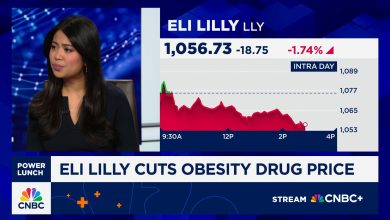Kenvue Fights Back Against Autism Warning Label for Tylenol — What’s at Stake?

A high-profile fight over a little white pill has suddenly become a major public-health and corporate drama. In late 2025, the U.S. Food and Drug Administration announced it would move forward with safety label changes for acetaminophen — the active ingredient in Tylenol — after reviewing evidence that prenatal exposure may be associated with an increased risk of neurodevelopmental disorders such as autism and ADHD. That decision kicked off a rapid response from Kenvue, the company that makes Tylenol, which has formally urged the FDA to reject requests to add explicit autism-related warnings to consumer labels. The clash is about more than wording on a bottle: it raises questions about scientific uncertainty and causation, maternal health choices, corporate liability and reputation, and how regulators balance evidence with practical risks.
Below I unpack the science, the regulatory fight, Kenvue’s arguments, and the real-world stakes for pregnant people, healthcare providers, and Kenvue itself.
What the FDA proposed — and why it matters
On September 22, 2025, the FDA announced it would respond to evidence suggesting an association between acetaminophen use during pregnancy and neurodevelopmental outcomes in children, and initiated steps toward changing safety communications and labeling. The agency emphasized that while some studies show an association, a causal link has not been definitively established — a distinction at the center of the debate. The FDA said it would notify clinicians and consider updates to both professional and consumer-facing labeling to reflect the evidence review.
That announcement matters because acetaminophen (paracetamol) is one of the most commonly used medications in pregnancy. Until now it has been widely recommended as the preferred over-the-counter analgesic and antipyretic for pregnant people, because alternatives like NSAIDs (e.g., ibuprofen) carry clearer risks in some stages of pregnancy. Any change that signals increased risk could alter prescribing and self-care practices for millions of pregnant people worldwide.
The science: association vs causation
Over the past decade a growing number of epidemiological studies have reported an association between maternal use of acetaminophen in pregnancy and higher odds of autism spectrum disorder (ASD) or attention-deficit/hyperactivity disorder (ADHD) in offspring. Some recent systematic reviews and new cohort studies — using better methods, larger datasets, or sibling-comparison designs — have strengthened the signal of association, prompting regulators and researchers to take a closer look. Several academic centers, including Mount Sinai and Harvard, have published analyses and summaries highlighting potential links, while calling for careful interpretation.
But association is not causation. Observational studies are vulnerable to confounding. For example, the reason a pregnant person takes acetaminophen — fever or inflammation from infection — might itself be related to neurodevelopmental risks. Dosage, timing during pregnancy, and genetic or environmental factors complicate the inference. Randomized controlled trials on this subject are neither ethical nor feasible. That leaves regulators to weigh imperfect but accumulating observational evidence: is there enough to warn consumers explicitly about autism risk, or would such a warning be premature and potentially harmful by discouraging treatment of fever and pain in pregnancy?
Kenvue’s response: science, law, and public messaging
Kenvue has pushed back vigorously. In a formal, multi-page submission to the FDA and in public statements, the Tylenol maker argues that the “overwhelming weight of evidence” does not support a causal claim that acetaminophen causes autism or ADHD. Kenvue’s filings contend the citizen petitions seeking warning-label changes lack credible scientific support, would mislead consumers, and could be legally flawed. The company warns that a consumer-facing label implying a causal risk could confuse pregnant people and discourage appropriate treatment of fever, which itself carries risks during pregnancy.
Kenvue’s stance mixes scientific critique with pragmatic public-health messaging: maintain that acetaminophen is safe when used as directed, while urging the FDA to reject label changes that Kenvue says overreach. The company also points to the practical harms of under-treating fever or pain in pregnancy — an argument echoed by medical groups that say acetaminophen remains the safest option in many cases.
Politics, attention, and the speed of the debate
The policy fight has been accelerated by vocal political figures and advocacy groups who have pushed the FDA to act more aggressively — sometimes in language that blurs association and causation. That convergence of politics and science raises the odds that a regulatory decision will be debated not just in medical journals but on news channels, social media and in courtrooms. News outlets reported Kenvue’s formal plea to the FDA shortly after political leaders highlighted the alleged acetaminophen-autism link, which intensified public attention and pressure.
When science becomes entangled with politics, the risk is twofold: regulatory overcorrection based on incomplete evidence, or public confusion that leads to dangerous substitutions (like untreated fever or use of riskier alternatives). Both outcomes are bad for public health.
What’s at stake for pregnant people and clinicians
If the FDA adds a warning suggesting an association between acetaminophen and autism/ADHD, many pregnant people will notice. Even a carefully worded advisory — “some studies report an association but causality not established; discuss with your clinician” — can trigger anxiety, behavior change, and altered treatment choices.
That’s not just theoretical. Research on risk perception shows that pregnancy is a time when people are especially sensitive to any possible harms to the fetus, and consumers often act on labels. If pregnant patients stop using acetaminophen without agreeing on a safe alternative, they may leave fevers or severe pain untreated — both of which can have adverse consequences for pregnancy. Clinicians, meanwhile, will be placed in a difficult position of explaining nuanced evidence under time pressure, often to anxious patients.
The medical community’s response has largely been cautionary: groups such as the American College of Obstetricians and Gynecologists have emphasized acetaminophen’s long-standing role as the safest available choice for many pregnant patients and have urged balanced interpretation of the evidence. That cautious tone makes sense given the potential harms of both over- and under-reaction.
What’s at stake for Kenvue
For Kenvue, the stakes are reputational, financial, and legal.
Reputation and sales. Tylenol is an iconic consumer brand and a major revenue generator. A warning that connects its product with autism — even one that does not explicitly state causation — risks reducing consumer trust and could depress sales, at least temporarily. Kenvue’s swift, public rebuttal is partly an attempt to protect brand trust and reassure clinicians and consumers.
Litigation risk. If regulators adopt language that suggests a link between acetaminophen and neurodevelopmental disorders, plaintiffs’ lawyers could argue that companies knew or should have known about the risks, potentially opening new avenues for lawsuits. Conversely, if the FDA does not change labels but new research continues to show associations, Kenvue could still face increased litigation pressure. The company’s legal teams are undoubtedly watching both the scientific literature and regulatory moves closely.
Investor confidence. Kenvue has already faced other legal and financial challenges in recent years; another storm around a core product could hurt investor confidence and stock price volatility. Public filings and press responses suggest Kenvue wants to avoid a label change that could have cascading business consequences.
The broader regulatory and scientific dilemma
This dispute highlights a broader policy dilemma: how should regulators communicate about risks when the evidence is suggestive but not definitive? The precautionary principle pushes toward warning the public to reduce potential harm. But overly alarmist labels can produce unintended side effects — reduced use of a generally safe medication, substitution with more harmful drugs, or widespread anxiety.
Regulatory decisions are not binary. Agencies can choose from a palette of actions: targeted clinician advisories, updated professional labeling (read mainly by healthcare providers), consumer-facing fact sheets that explain nuance, or explicit warnings on packaging. Each option has different implications for behavior and liability. The FDA’s choice will signal how it balances precaution with the practicalities of maternal care.
Possible outcomes and timelines
Regulatory processes move slowly by design, but recent political attention has accelerated scrutiny. Possible near-term outcomes include:
- Professional labeling update plus clinician advisory: The FDA could add language to professional guidance for prescribers, asking them to weigh risks and benefits and discuss acetaminophen use with pregnant patients. This is currently one of the agency’s likely choices and would limit direct consumer alarm while ensuring clinicians are informed.
- Consumer-facing label change: The FDA could require an explicit consumer warning on OTC packaging. That would be the most visible option and would likely prompt immediate public reaction and media coverage.
- No label change, but communication campaign: The FDA could opt to publish summaries and educational materials without changing labels, emphasizing that evidence is mixed and advising prudent use.
- Further study and monitoring: The agency could call for more research or long-term surveillance, while maintaining current labeling for now.
Each path has trade-offs. Given the complexity of the evidence, many experts think a clinician-focused approach combined with public education is the most balanced immediate step, while the science continues to evolve.
How to interpret the science if you’re pregnant or planning pregnancy
I’m not a doctor, but here are practical takeaways experts typically recommend when evidence is evolving:
- Talk to your clinician. Decisions about treating pain or fever during pregnancy should be individualized. Clinicians can consider your medical history, the reason for treatment, and timing during pregnancy.
- Use the lowest effective dose for the shortest necessary time. That’s been standard guidance for many medications in pregnancy.
- Don’t substitute without advice. Some alternative medications carry established risks during certain trimesters. Don’t switch or stop medications based solely on media reports.
- Treat high fevers. Fever in pregnancy can be harmful; managing fever is an important clinical consideration.
These are consistent with statements from major obstetric societies that continue to see acetaminophen as an important option while advising caution and discussion.
What this fight teaches us about science communication
The Kenvue–FDA episode is a case study in how imperfect science, corporate interests, political pressure, and public anxiety collide. A few lessons stand out:
- Language matters. “Association” and “causation” are technical terms, but the public often treats them as the same. Regulators and companies must choose words carefully to avoid misleading people.
- Context matters. A label change without supportive context — why the evidence is uncertain, what alternatives exist, how to manage symptoms — can do more harm than good.
- Trust is fragile. Corporate statements defending products can be read as self-interested; regulators’ actions are scrutinized for political influence. Building and maintaining public trust requires transparency about uncertainty and clear guidance on practical steps.
- Science evolves. What looks like a robust association today may be clarified or reframed as new analyses emerge. Regulatory responses should be nimble but cautious.
Bottom line
Kenvue’s formal pushback against autism-related warnings for Tylenol is understandable from a corporate and public-messaging perspective; it reflects genuine scientific uncertainty and the pragmatic concerns of pregnant people and clinicians. At the same time, regulators face pressure to act responsibly in the face of mounting epidemiological evidence that cannot be ignored. The outcome will affect millions of pregnancies, shape clinical practice, and influence Kenvue’s brand and legal exposure.
As the FDA and Kenvue continue to file positions and the scientific community publishes new analyses, the best short-term strategy for individuals is clear communication with healthcare providers and cautious, evidence-informed decision-making. For policymakers and companies, the episode is a reminder that scientific nuance must be translated into clear, practical, and responsible public guidance — especially when the health of pregnant people and children is at stake.




